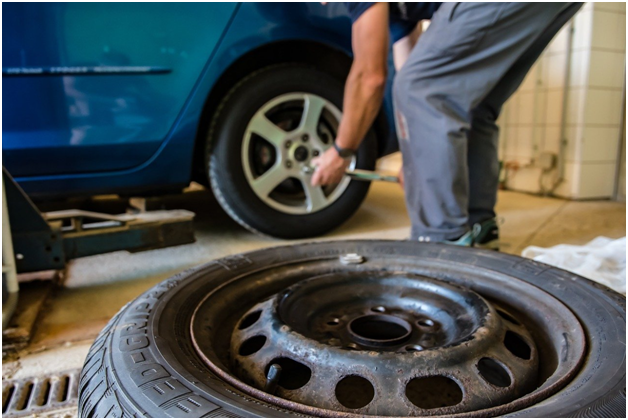In a world where people use vehicles daily, challenges always arise; therefore, vehicle maintenance is essential. Wheel maintenance is among the crucial things that need timely check-ups and maintenance. Failure to accord this proper care may lead to inefficiency, which may cause accidents in all weather conditions. Time to time inspections of wheel pressure and tread wear helps keep menace and accidents. Here are some points to help out in wheel maintenance.
Air Pressure
Well-inflated wheels are essential to keep them in proper condition. The under-inflated wheels are the main reason for their damage. Underinflation brings about rolling friction that leads to heating, affecting treads hence short wheel bund life. Underinflated wheels also increase rolling resistance, which means your engine has to burn more fuel. Over-inflation causes wear and tear of the middle part of the tyre hence collateral damage. It is recommended to check a car’s pressure often to ensure the proper pressure is in the wheels, mainly measured in Pounds per Inch (PSI). Count when the wheels are cold for accurate results.
Balancing and Wheel Alignment
Balanced wheels are vital for comfortable driving, and they prolong a wheel’s life. Failure to conduct wheel balancing leads to vibrations, which cause driver fatigue, untimely tyre wear, and unwarranted abrasion of the vehicle’s suspension. It is always necessary to conduct wheel balancing and alignment yearly or after every 25000km. Each vehicle has its special alignment, and if it is not to its specific limits, it may cause irregular tread wear and consume more fuel. Lack of proper alignment can be sensed through unusual steering problems.
Tyre Rotation
Front tyres tend to wear faster than the rear ones. Rotating them is always a good idea to ensure there is uniform wear. While rotating directional wheels, you should not rotate left side wheels with those on the right side. You can freely rotate non-directional wheels to any position to prevent negative effects while handling the vehicle. Users should perform rotations between 8000 KM and 10000 KM depending on the vehicle type.
Using the Right Wheels
Wheels vary in type according to weather conditions. Many people usually go for all-weather wheels since they give positive performance throughout the year. However, in hostile weather conditions, it is advisable to switch between winter and summer wheels. Winter wheels work well under 7 degrees Celsius, while summer wheels are specially designed to give optimum service.
Checking Tread Status
Proper tyre tread enhances vehicle traction while on the road. When inspecting a wheel’s condition, it is always good to check the depth of the treads. In wet weather conditions, minimal tread depth may negatively impact vehicle handling due to skidding and sliding. The minimum safe tread depth should be 1.6mm. You can check tread depth by simply using a coin. Put the coin with the national emblem’s head towards the tyre; if the head is visible, then your tyre’s tread depth is too low. You can also use tread wear indicators, which resemble attenuated strips of even rubber.
The Vehicle’s Maximum Load Limit
Each vehicle has specific limitations, seen easily from the manual. Overloading causes damage to the vehicle’s wheels and other components. While purchasing the wheels, ensure that they bear the load index indicated on the vehicle’s manual. When overloaded, the wheels are always at a risk of blowout hence higher chances of having an accident.
Driving Habits
Driving at a very high speed causes damage to the wheels since excessive heat builds up, which can cause cars to explode quickly. You should limit yourself from heavy braking as it causes tread wear and skidding. It would be best if you avoided potholes, bumps, and road undulations which cause not only damage to other parts of the vehicle and your wheels. Avoid spinning when stuck in the mud, ice, waterlogging, or sand. Centrifugal forces caused by free spinning can lead to tyre bursts or other damages. Always engage back and forward motion to set your vehicle free.
Taking Caution to Curbs
Curbs can also cause tyre damage if one does not keep a careful eye on them while driving. Mounting or bumping on them without care is dangerous since the sidewall can pinch the tyre between the curb and the rim. It is always wise to carefully maneuver and slowly mount on curbs to avoid scraping pavement sides.
Well-maintained wheels contribute to operational cost savings because buying new wheels often is expensive. When thinking about road safety, wheel maintenance should be a factor to consider. Failure to maintain the wheels increases the risk of getting into a road accident and may generally lead to vehicle damage. Brakes’ dust, general debris, and road salt can hasten the abrasion of your wheels. Therefore it is important to keep them clean. Tyre-dressing products keep your tyre young for a long.

